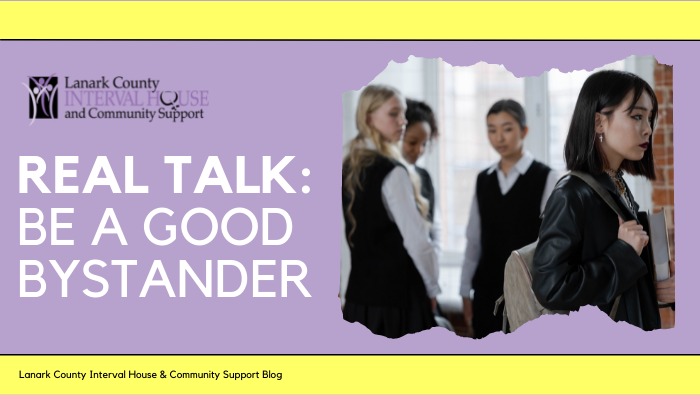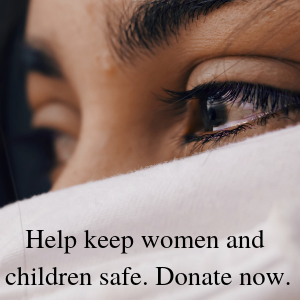Have you ever seen someone act towards another person in a way you know isn’t okay? Have you ever heard someone say something offensive or hurtful to another person?
Did you say something?
Intervening when something is wrong is hard. It’s difficult to know what to say or do to help the situation, rather than making it worse. Lots of times it’s easier to just think it’s none of my business and walk away.
The bystander effect occurs when we see a person in need and decide not to help, usually because we think someone else might help. The only one responsible for violence is the perpetrator, but we all have a responsibility to change the culture around gender-based violence; we all have the ability to look out for each other’s safety. If we all spoke up as active violence, we could put an end to so many instances of violence. Even things like sexist jokes, inappropriate comments, innuendos, or catcalling – they aren’t illegal, but they are threatening and harmful for the person on the receiving end and they contribute to a society where violence in normalized. It can be uncomfortable to step in, but if it means helping someone and making our community safer for everyone, it’s worth it! Whether it’s confronting the abuser or giving someone a safe ride home, we can all help to prevent violence.
How to be an Active Bystander:
When you encounter a problematic situation, decide how you are going to respond. Ask yourself: Is it safe and reasonable to intervene? What actions am I comfortable taking?
The 4 D’s make it easier to choose how to respond:
Direct intervention in the situation by inserting yourself. Confront the harasser in a direct, respectful manner.
“You need to stop”
“That is so inappropriate”
“What you just said/did made me so uncomfortable because…”
“Do you realize how problematic that is?”
“Why would you say that?”
“We need to talk about what you just said”
“I know you’re a better person that that”
Learn more about what to say with this video!
Distract either party. This can be simple. Ask for directions or pretend you know the person being harassed and start talking to them.
Delegate: bring in someone else to help you
Delay your response if the situation is too dangerous. Walk away and wait for the situation to pass. Ask the victim later if they are okay or report it if it’s safe to do so. It’s never too late to act!
The number one most important thing to keep in mind is your own personal safety. If it seems dangerous to intervene, don’t. It’s always better to remember there are strength in numbers. Not only does this keep you safer, but the more people that come together the more you can asset the behaviour is unacceptable. If you don’t feel safe intervening, call 911. In addition to the four D’s, it’s a good idea to remember the ABC’s of bystander intervention as well:
A – Assess the situation for your safety
B – Be in a group. Remember there is strength in numbers!
C – Care and comfort for the victim
After the situation is diffused and/or the abuser has left the scene, make sure to talk to the victim. Let them know what happened isn’t their fault and affirm they did nothing wrong to deserve that treatment. Provide them with resources if you have any (Lanark County Interval House is good one!).
“I saw what happened, are you okay?”
“I heard what that person said, are you okay?”
Recognizing Your Privilege
Be aware of how privileged you are. Your age, race, gender, etc. may make it easier for you to stand up than someone else. Recognize your privilege and use it for good.
To avoid being a passive bystander, never assume someone else is going to intervene. Seeing and naming violence for what it is is the only way we can change it!
Resources
Bystander Intervention Webinar with Julie S. Lalonde
Breaking the Silence – How to be an active bystander
The #MeToo Movement: How to Be a Good Bystander


